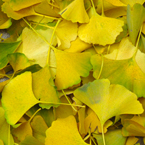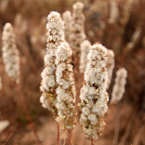Nature Photo: Fall Season Ginkgo Leaves |
 |
 |
| Support Us! Give us a proper credit when you use this photo. Thank you! |
 |
|
|
| © School Photo Project |
| Free Photo Tags: ginkgo leaves, dead yellowed leaves, leaf photos, yellow leaves, decomposed leaves, cover the ground, autumn, fall season, fall foliage, nature photo, free stock photo, free picture, stock photography, royalty-free image, school photo project use |
| Photo Sizes Medium: 586 X 440 pixels, 72 dpi. Large: 2272 X 1704 pixels, 72 dpi. |
To Download Photo Mac: Click and drag photo to desktop. PC: Right-click photo and save image/photo to desktop. |
GinkgoThe Ginkgo is a living fossil, with
fossils recognisably related to modern Ginkgo from
the Permian, dating back 270 million years.
The most plausible ancestral group for the order
Ginkgoales is the Pteridospermatophyta, also known
as the "seed ferns," specifically the
order Peltaspermales. The closest living relatives
of the clade are the cycads, which share with the
extant G. biloba the characteristic of motile sperm.
Fossils attributable to the genus Ginkgo first appeared
in the Early Jurassic, and the genus diversified
and spread throughout Laurasia during the middle
Jurassic and Early Cretaceous. It declined in diversity
as the Cretaceous progressed, and by the Paleocene,
Ginkgo adiantoides was the only Ginkgo species left
in the Northern Hemisphere while a markedly different
(and poorly documented) form persisted in the Southern
Hemisphere. At the end of the Pliocene, Ginkgo fossils
disappeared from the fossil record everywhere except
in a small area of central China where the modern
species survived. It is doubtful whether the Northern
Hemisphere fossil species of Ginkgo can be reliably
distinguished. Given the slow pace of evolution
and morphological similarity between members of
the genus, there may have been only one or two species
existing in the Northern Hemisphere through the
entirety of the Cenozoic: present-day G. biloba
(including G. adiantoides) and G. gardneri from
the Paleocene of Scotland. (Source: Wikipedia.org)
|
|

|
Advertisement
|
| If you enjoy photography and want to improve your photo skills you can check our Photo Tips section that contains a selection of Articles and Video Tutorials from various amazing photo sources. |
|

|
Donate to Us
|
|
With your support, we can bring more and more quality FREE Photos to everyone – Thank You!
|











